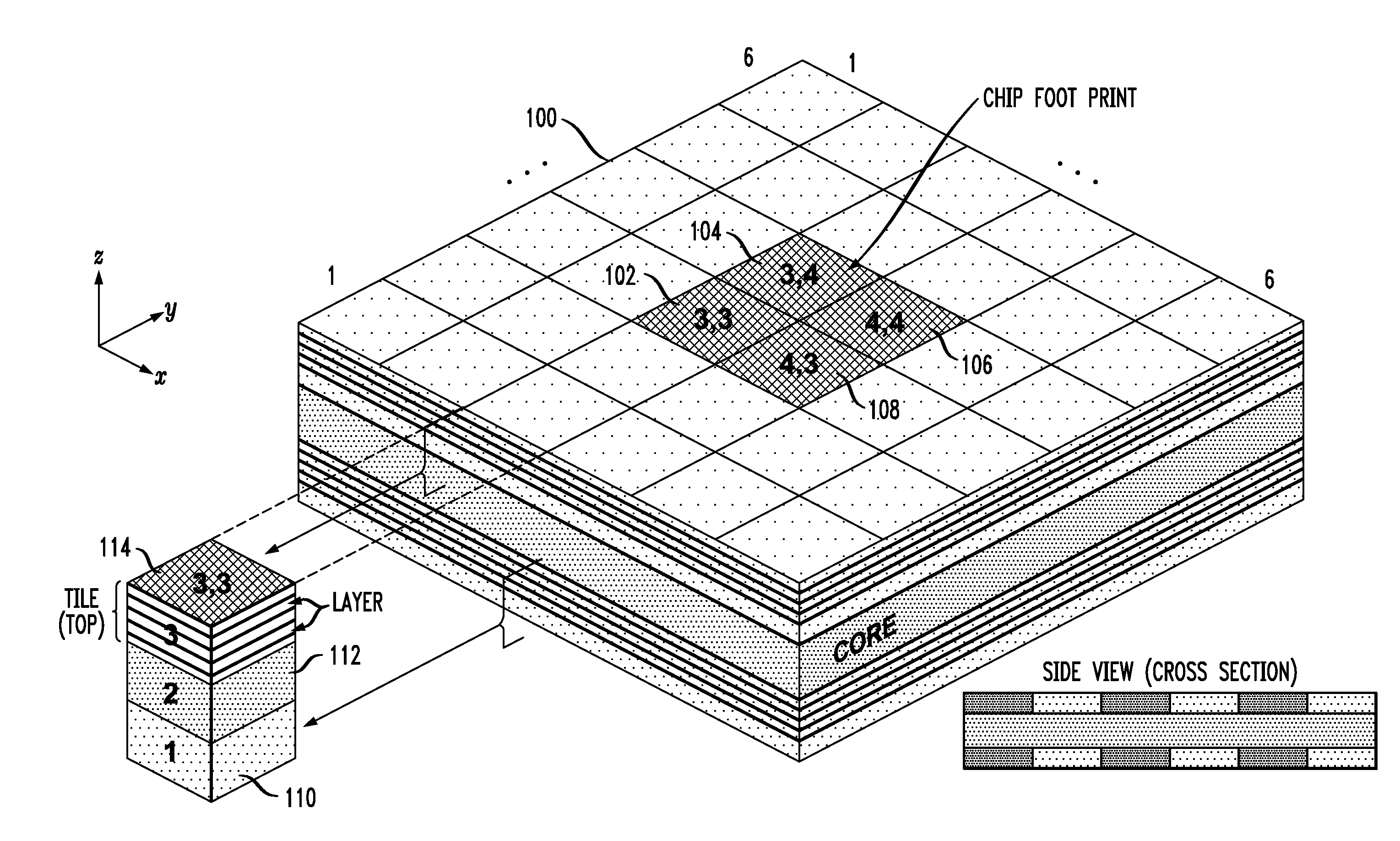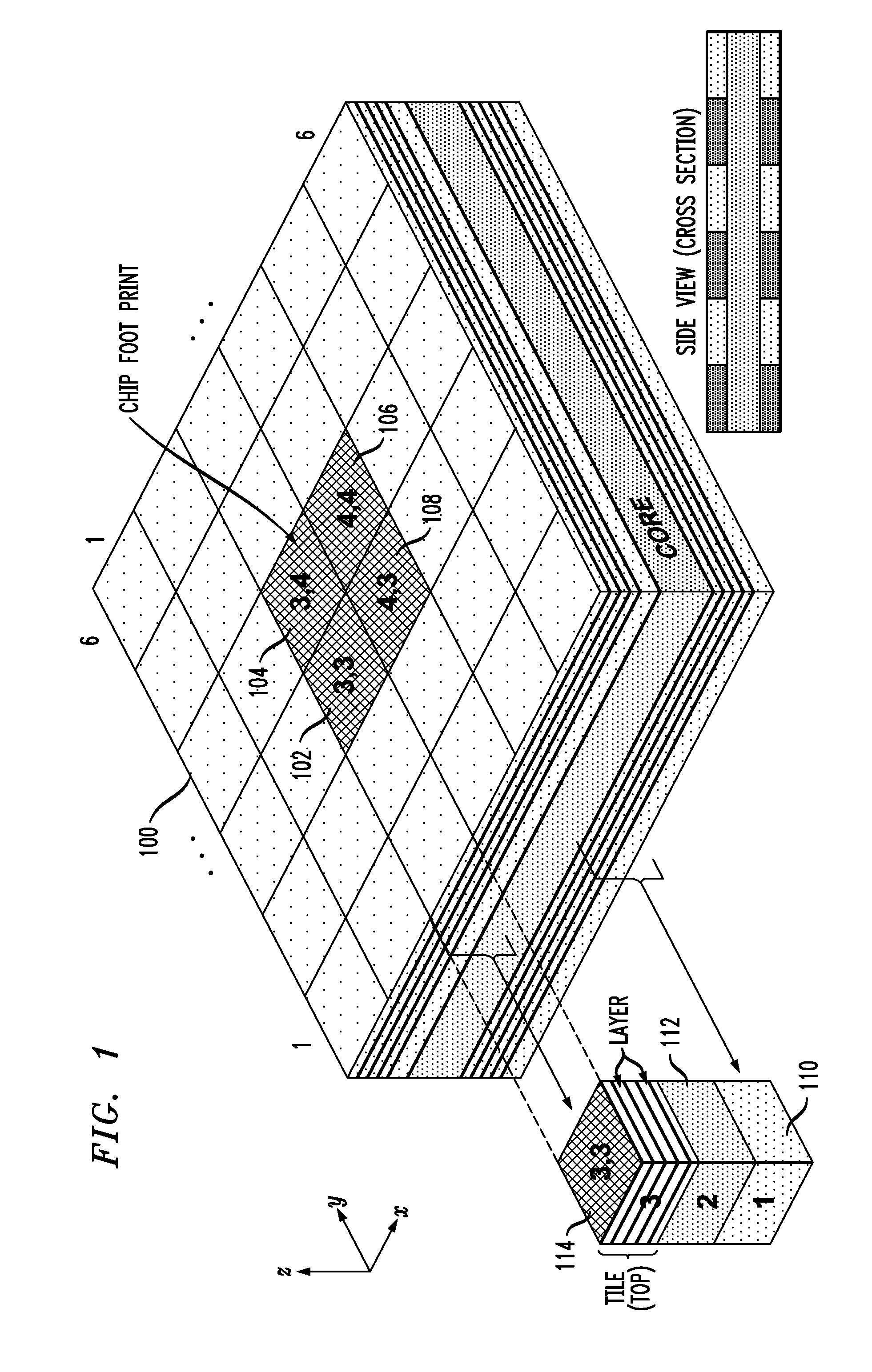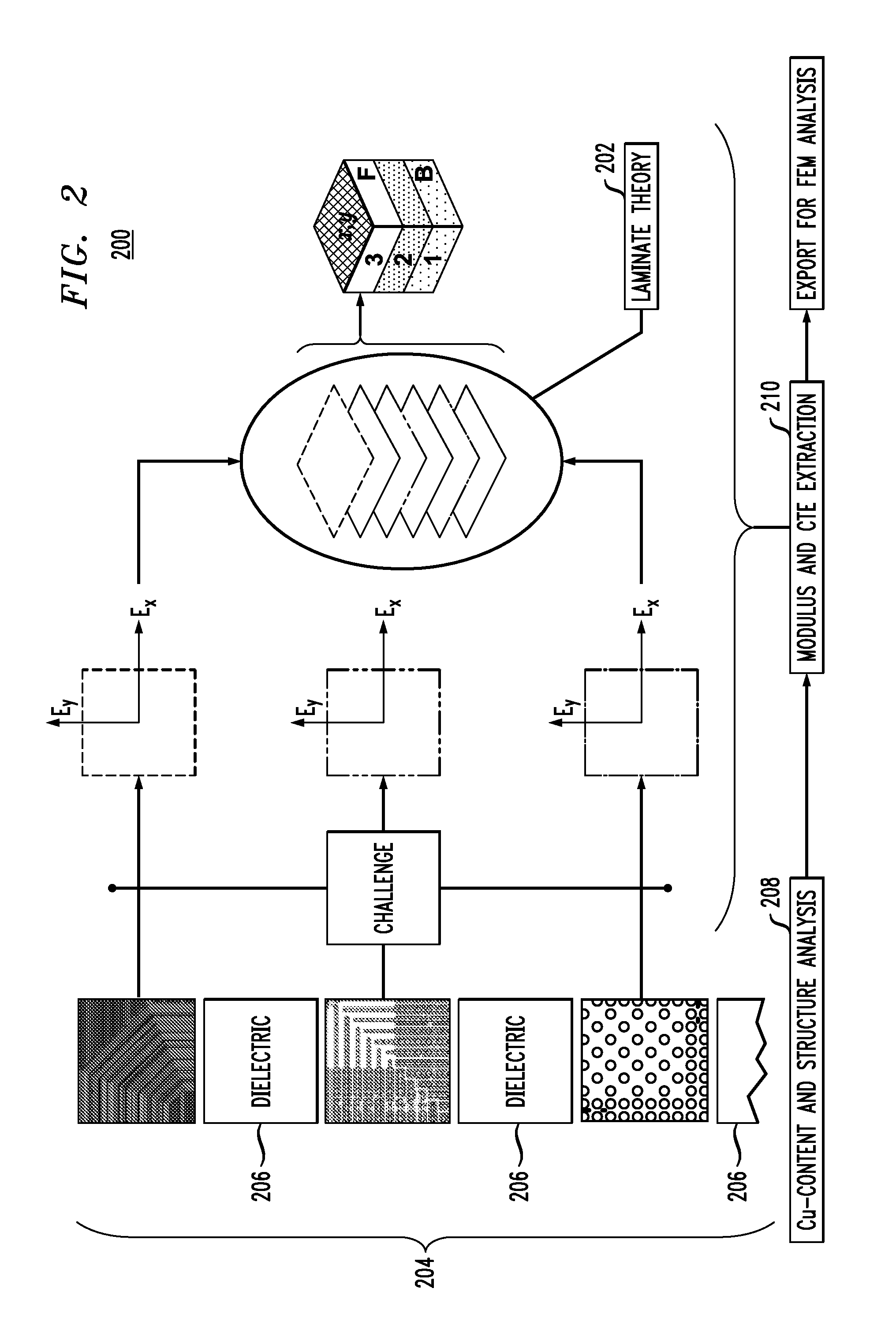Characterizing Thermomechanical Properties of an Organic Substrate Using Three-Dimensional Finite Element Analysis
a technology of finite element analysis and thermomechanical properties, applied in the field of electric and electronic devices, can solve the problems of low accuracy of warp prediction, low accuracy low reliability of organic chip carrier, etc., and achieve the effect of facilitating the best representation
- Summary
- Abstract
- Description
- Claims
- Application Information
AI Technical Summary
Benefits of technology
Problems solved by technology
Method used
Image
Examples
Embodiment Construction
[0030]The present invention will be described herein in the context of illustrative methodologies using 3-D FEM for improving the prediction of warp in an organic chip carrier or substrate. Embodiments of the invention divide the substrate into a plurality of “tiles” and then generate a 3-D FEM geometry for each tile from 2-D images respective circuit layers of the tile. This methodology mimics an actual substrate manufacturing process, and facilitates an enhanced representation of a real organic substrate without making any image related approximations. It is to be appreciated, however, that the techniques of the present invention are not limited to the specific methods and application shown and described herein. Rather, embodiments of the invention are directed broadly to improved techniques for generating a more accurate thermomechanical model representing a circuit structure.
[0031]While techniques of the present invention are described herein with specific reference to substrate...
PUM
 Login to View More
Login to View More Abstract
Description
Claims
Application Information
 Login to View More
Login to View More - R&D
- Intellectual Property
- Life Sciences
- Materials
- Tech Scout
- Unparalleled Data Quality
- Higher Quality Content
- 60% Fewer Hallucinations
Browse by: Latest US Patents, China's latest patents, Technical Efficacy Thesaurus, Application Domain, Technology Topic, Popular Technical Reports.
© 2025 PatSnap. All rights reserved.Legal|Privacy policy|Modern Slavery Act Transparency Statement|Sitemap|About US| Contact US: help@patsnap.com



